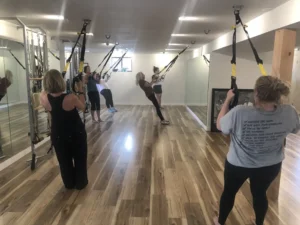Class Descriptions | Pilates Classes
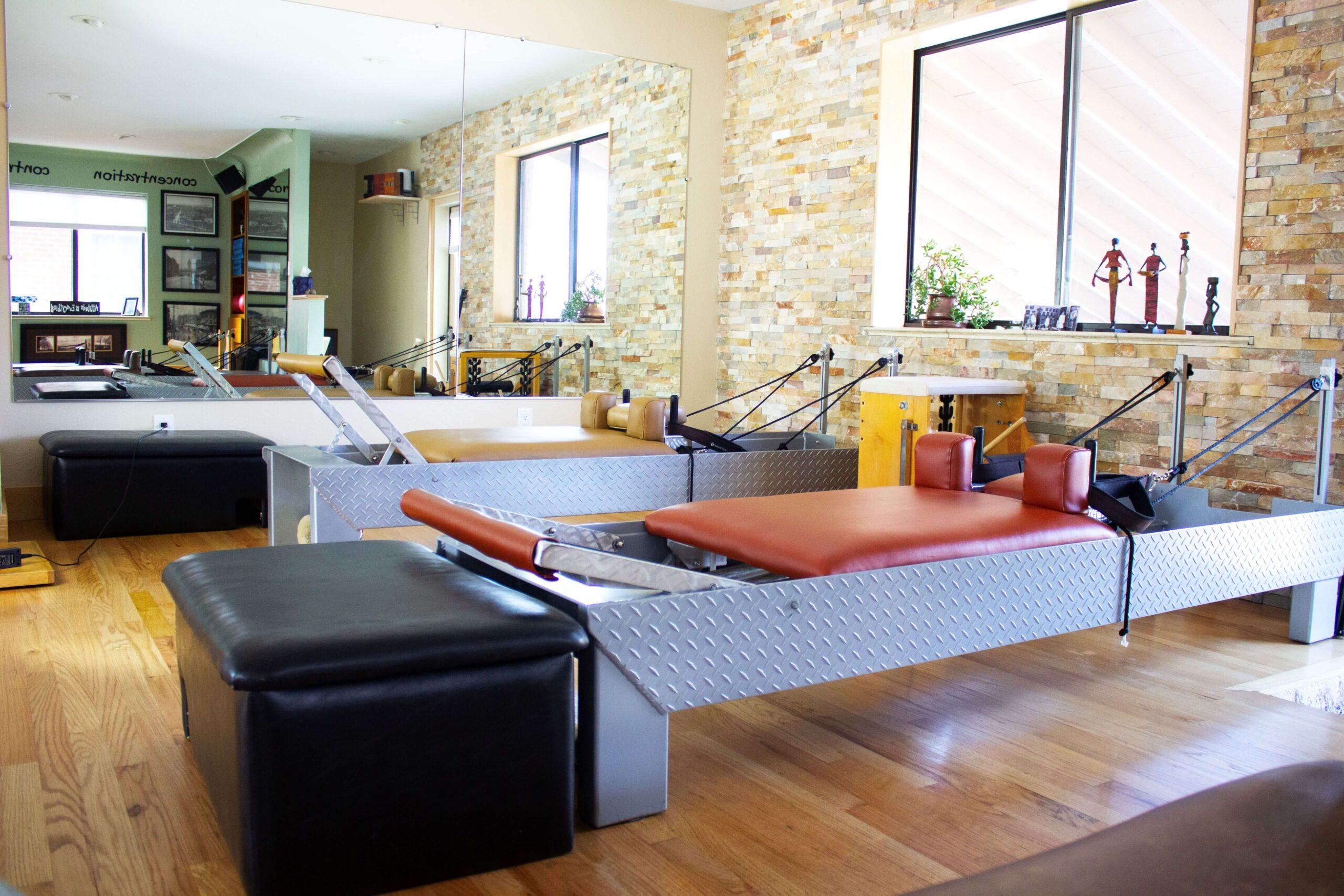
Pilates Reformer
What the heck is a reformer? Does it reform you? It most certainly does! The Pilates reformer can make a dramatic change in your body when used correctly. Joseph Pilates invented this piece of equipment over 100 years ago. It consists of an upholstered carriage that glides back and forth, utilizing spring resistance. It has a foot bar at one end and pulleys at the other.
There are many exercises to do on this one large piece of equipment, involving many positions, such as supine, prone, side-lined, seated, Z-sitting, knealing, etc. The reformer allows your muscles to lengthen and strengthen simultaneously. The physical benefits are a wide range, including core and pelvic floor, upper and lower body strengthening, flexibility, muscular endurance, increased lung capacity, balance and coordination. We have several levels to choose from, including rehab, beginner, intermediate, advanced, as well as, multi-level. We offer privates with 1-8, as well as, group training.
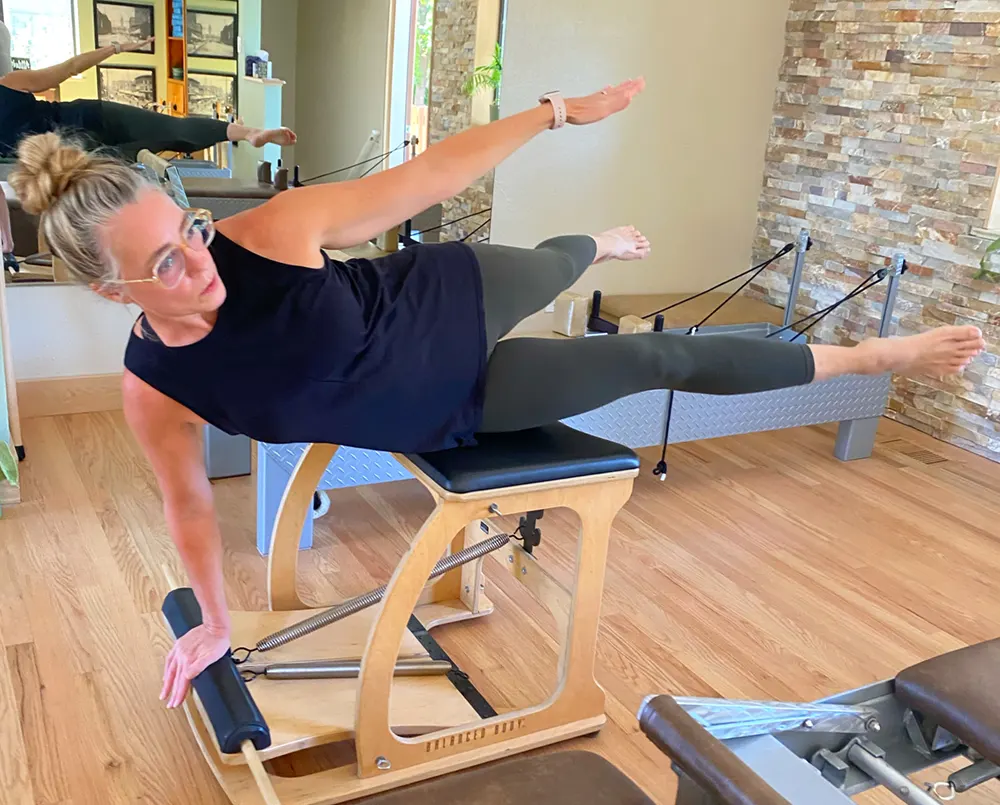
Pilates Chair
A chair? Don’t you just sit on one? Not this one. You practically do anything but sit on it. We do a little bit of sitting on it, but we also do exercises in standing, bent over positions, hand stand like positions, kneeling, supine, prone, etc. This little innocent looking apparatus will strengthen every little (and big) muscle in your body. It will also create joint stability like you would not believe. It will help to increase flexibility and like all great Pilates machines, it will strengthen your core. And maybe the best thing about Pilates chair is the balance it will help you achieve. If you think you have good balance, test out your skills. Like most Pilates apparatuses, the chair utilizes spring resistance and assistance to challenge even the most conditioned athlete and help the Pilates newbie or rehab client strengthen their body and beyond. We offer an intro to chair class, as well as, an advanced class called you guessed it-challenging chair. If you have been doing Pilates mat and/or reformer or even tower class for some time, it’s time to check this class out. If you are new to Pilates and want to increase core, upper and lower body strength, flexibility, joint stability and balance, take a class.
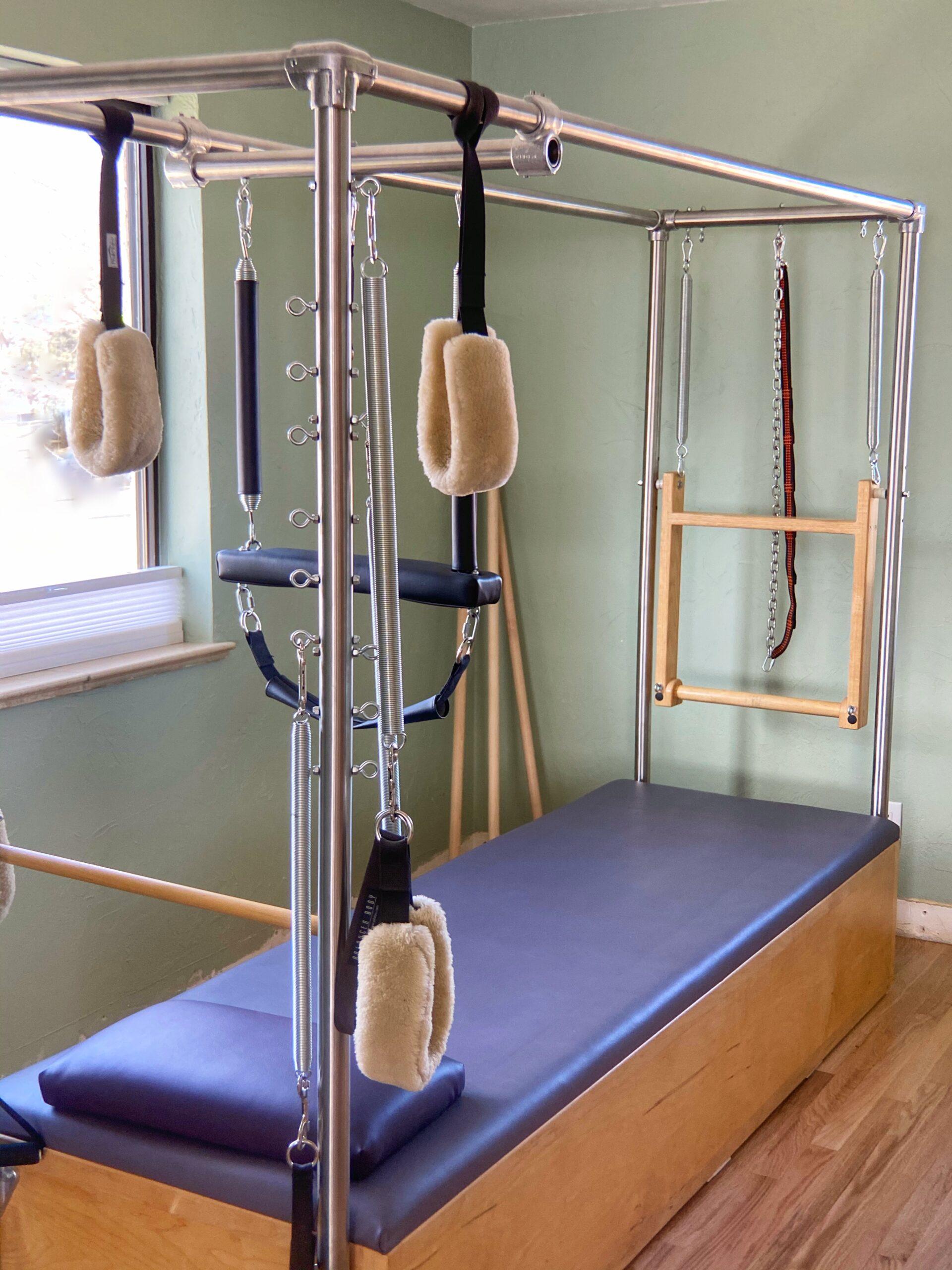
Pilates Cadillac (Trap Table) and Towers
When Joseph Pilates was in the war, he worked as an orderly in a hospital where he worked with patients who were unable to walk. There he attached bed springs to the hospital beds to help support the patients’ limbs, leading to the development of his famous piece of equipment known as the ‘Cadillac’ or trap table. The Towers or wall units (if they are attached to the wall-like ours are) are just a smaller version of the Cadillac providing almost all of the same exercise opportunities as the Cadillac does. These machines are spring based just like the reformer and chair apparatuses to offer both resistance and assistance as needed working all the push and pull muscles in your body, large and small. And similar to the reformer, there are hundreds of was to increase core, upper and lower body strength and endurance, flexibility, balance, coordination and overall athleticism. Positionally, it is similar to all other Pilates exercises. We sit cross leg, long sit, Z-sit, stand, lie on our belly, back and side, etc. Unlike the reformer, where the carriage moves while performing exercises, the Cadillac carriage remains still while performing the exercises and your body moves on top of the carriage. We offer private lessons on the Cadillac or trap table and small classes of 6 for the Tower classes. This is perfect for beginners or athletes.
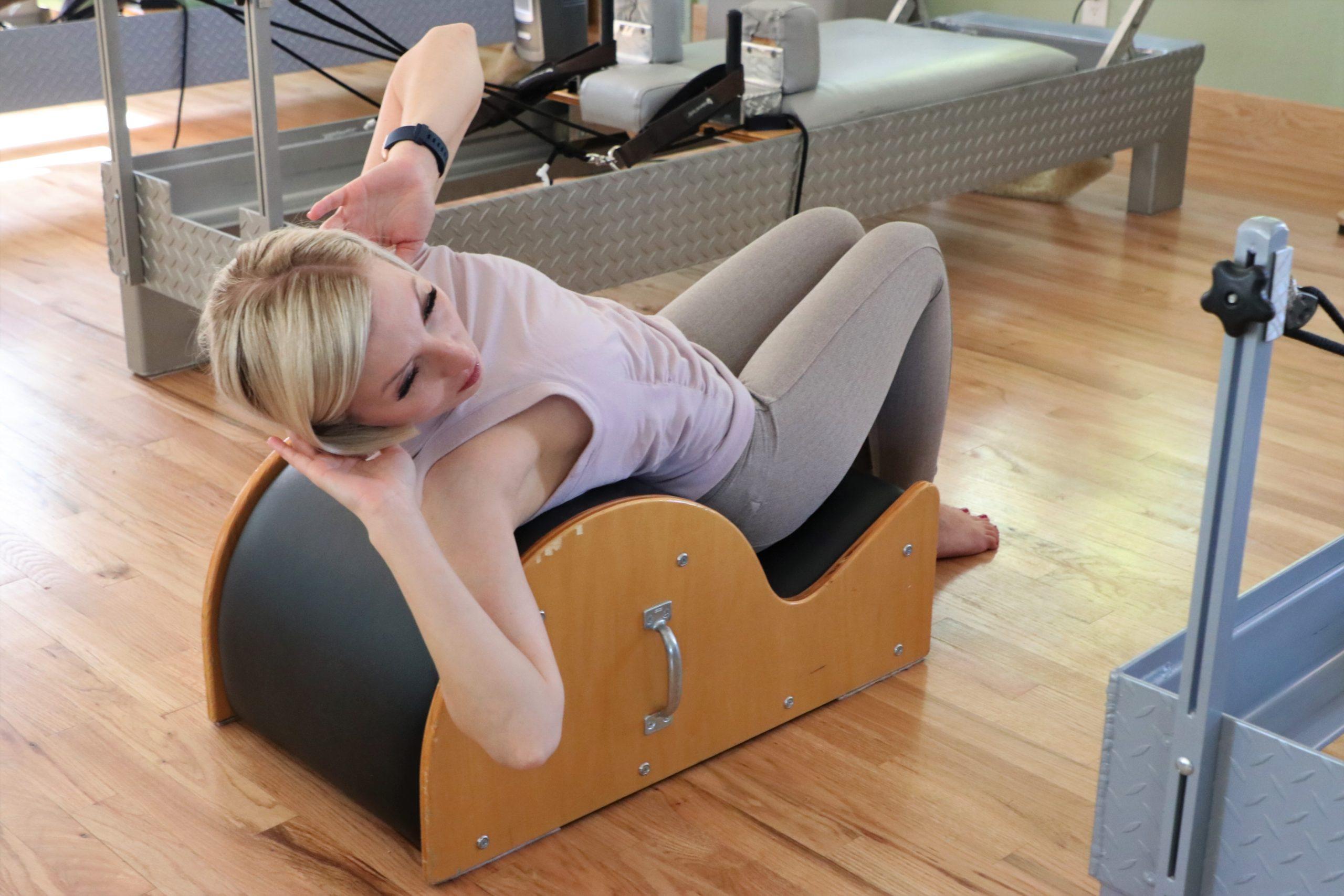
Pilates Barrel (Spine Corrector)
What in the world is a Spine Corrector? Well, it’s a small little apparatus compared to some of the giant Pilates machines. The barrel’s curved surface creates a whole new challenge as you work with or against gravity on an incline or a decline, as opposed to the mat’s flat surface. You can target range of motion in the hips, shoulders and spine from a new perspective. When doing the classic Pilates mat exercise, the roll-over, on the arc of the spine corrector, you target muscles in a completely different way. You will enhance mental focus, concentration and muscle recruitment. The foam barrels can also be used on the reformer to add variety and intensity to classical exercises.
Pilates Mat
The original movement system that Joseph Pilates created. Pilates began developing his exercise system in Germany in the early 1900s to combat his asthma and rickets as a child. He was determined to strengthen his frail and sickly body. He called his method “the art of contrology” or muscle control. Pilates mat is a non-spring based Pilates training practice that can be done on a mat, meaning, no reformer or other equipment is needed. There are 34 original mat exercises, all of which concentrate the work near the center of your body. In this class, you hold and move through movements like planks, side planks, and core exercises to build your muscle groups and core strength. In some mat classes, you can use props, such as, bands, exercise balls, small weights, foam rollers, the magic ring and others to help level up your Pilates experience. After performing the Pilates mat exercises, you will absolutely be stronger and longer in all of your muscles and feel great! Your backbone and joints will thank you!
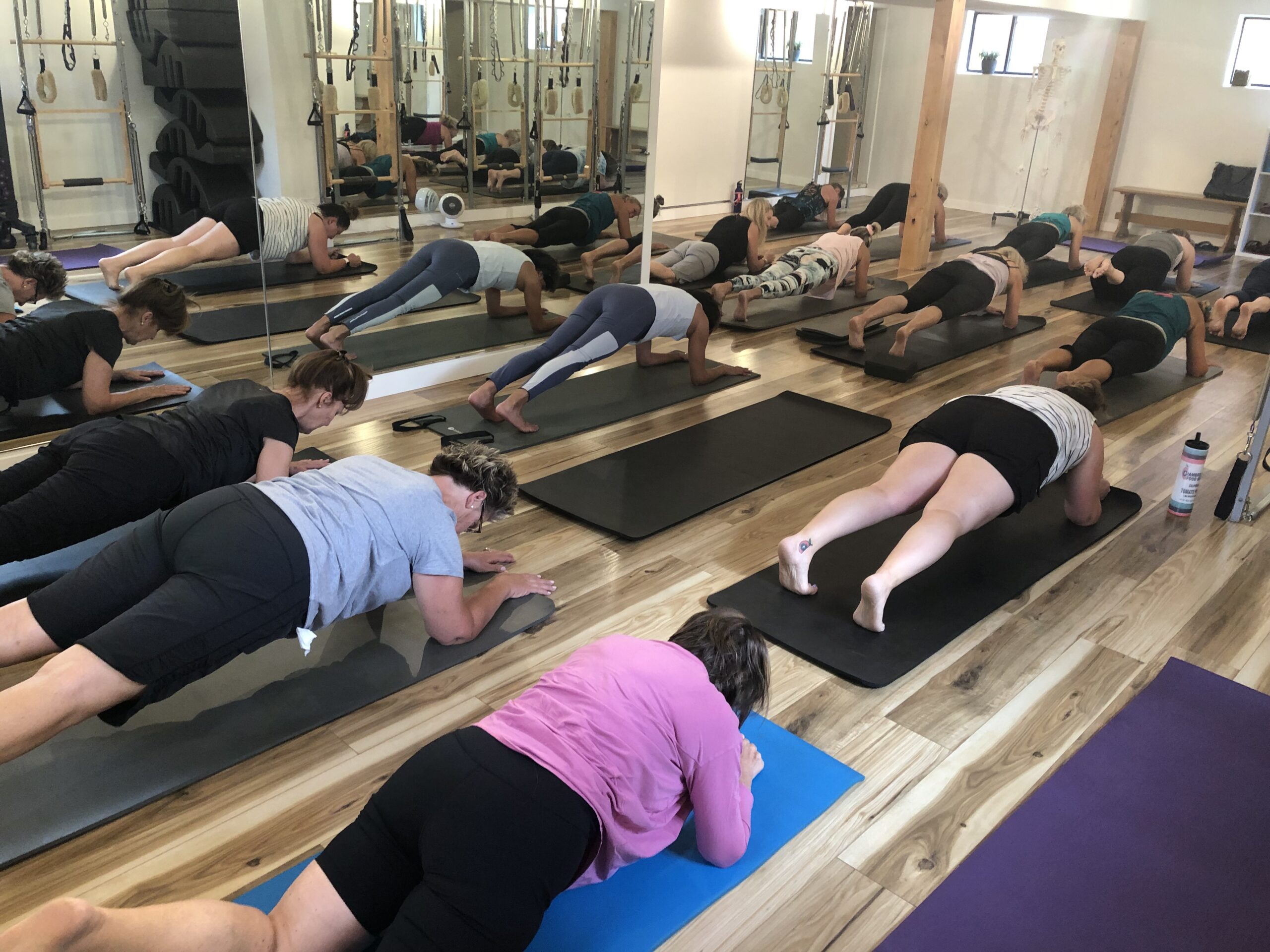
PiYo
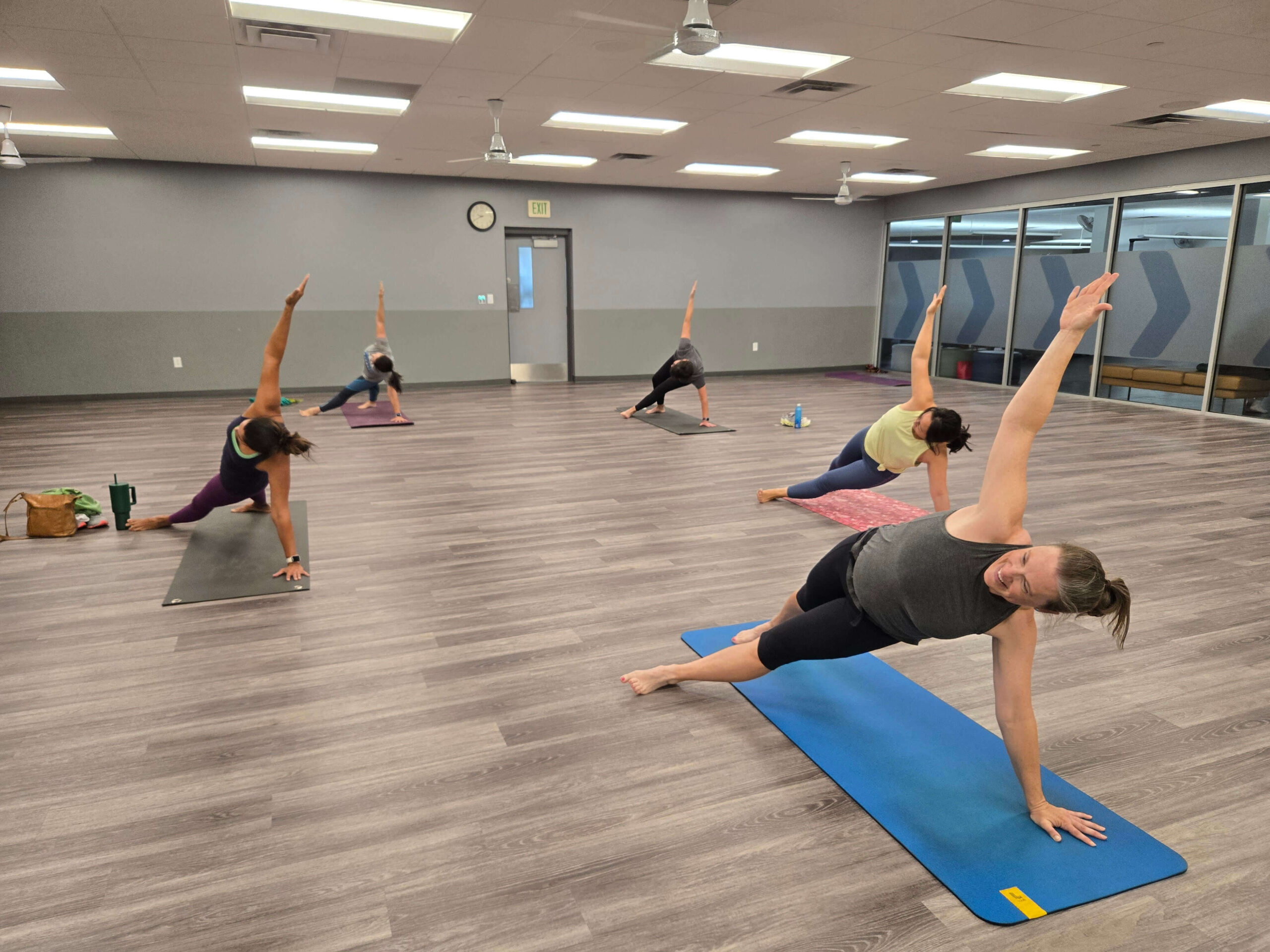
TRX Suspension Training
Must bring clean, dry tennis shoes
Suspension training was developed by a Navy Seal to strengthen your entire body, including your core, while improving balance and flexibility simultaneously. The TRX Suspension Trainer leverages gravity and the user’s body weight to complete 100’s of exercises. You’re in control of how much you want to challenge yourself on each exercise by simply adjusting your body position to increase or decrease resistance. Therefore, this class is for all levels. TRX is used by Olympians, many types of athletes, Military, as well as, every day people who want to look and feel their best.
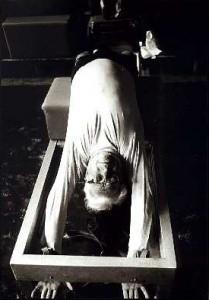

This is Joseph Pilates. He was born in Germany in 1883. He died in 1967. He was a physical trainer, credited with inventing and promoting the Pilates method, which he called Contrology. He was a frail child, suffering from asthma, rickets and rheumatic fever. Determined to become healthy, he became a competent gymnast, diver and skiier. He studied and participated in yoga and worked as a circus performer, boxer and a self-defense instructor.
I invented all these machines… it resists your movements in just the right way so those inner muscles really have to work against it. That way you can concentrate on movement. You must always do it slowly and smoothly. Then your whole body is in it.” – Joseph Pilates
Pilates Essential Principles
CONCENTRATION – key element to connecting your mind and body. Concentrate every time you exercise, use the power of your mind.
CONTROL – Joseph Pilates’ philosophy and basic foundation was the idea of muscle control by the mind. No sloppy movements propelled by momentum.
CENTERING – using the muscles between your rib cage and hips leads to a flatter stomach, better posture and back pain prevention.
BREATHING – improving blood circulation helps us to relax. You eventually learn how to coordinate a deep inhale and exhale with each movement.
FLUIDITY– emphasize grace of motion over speed and don’t isolate movements.
PRECISION– focus on one precise and perfect movement instead of 10 sloppy ones.

